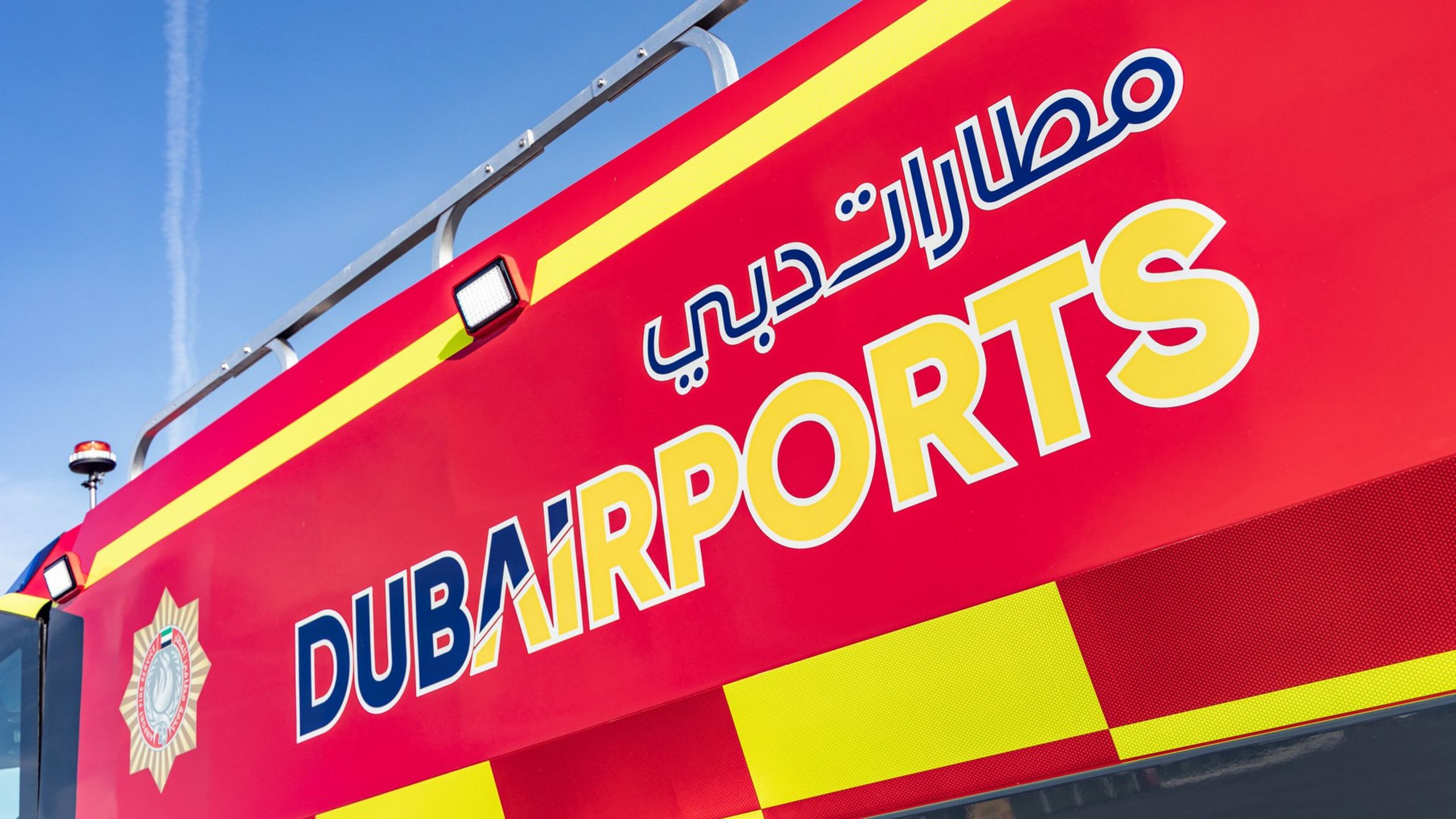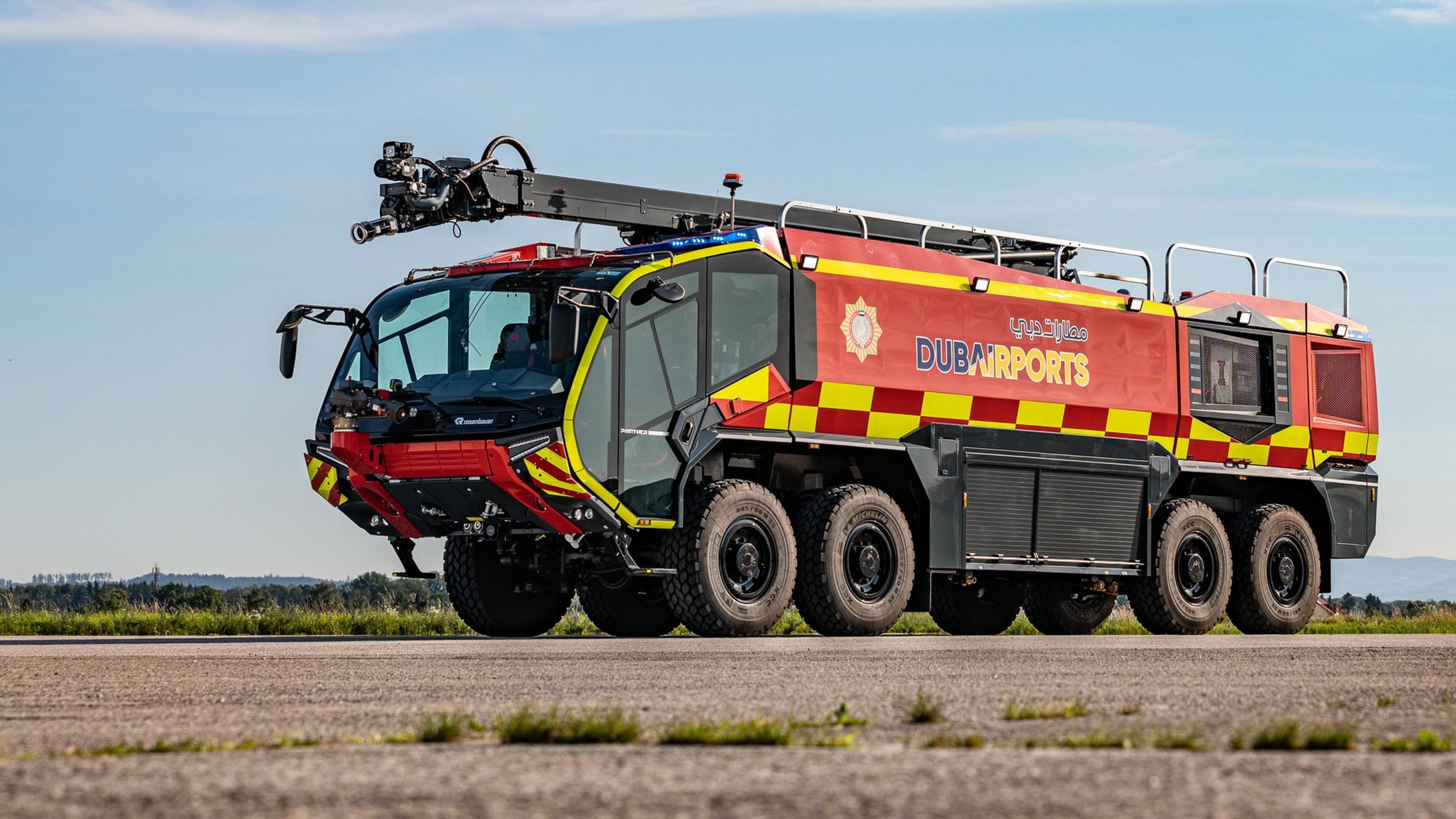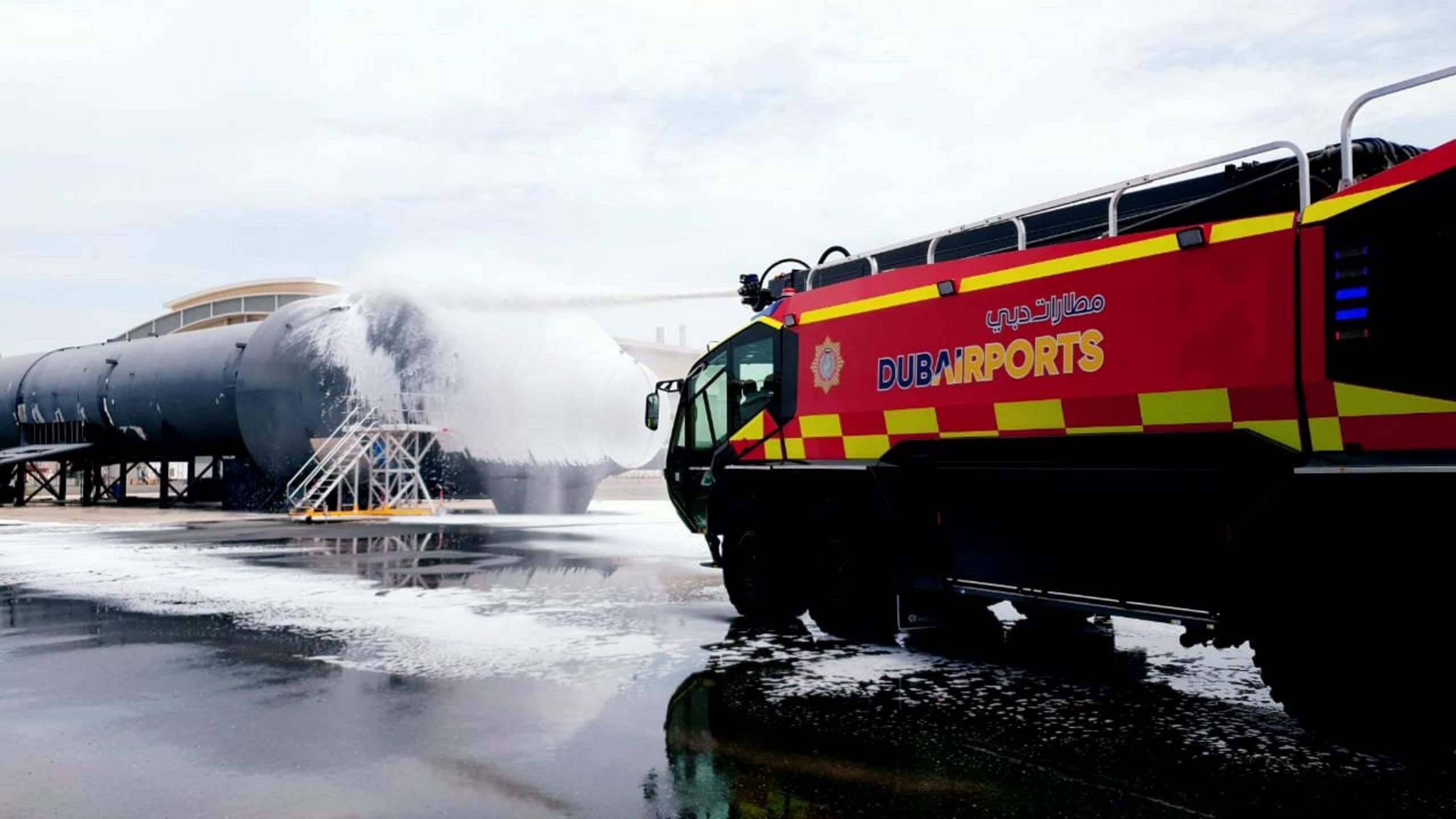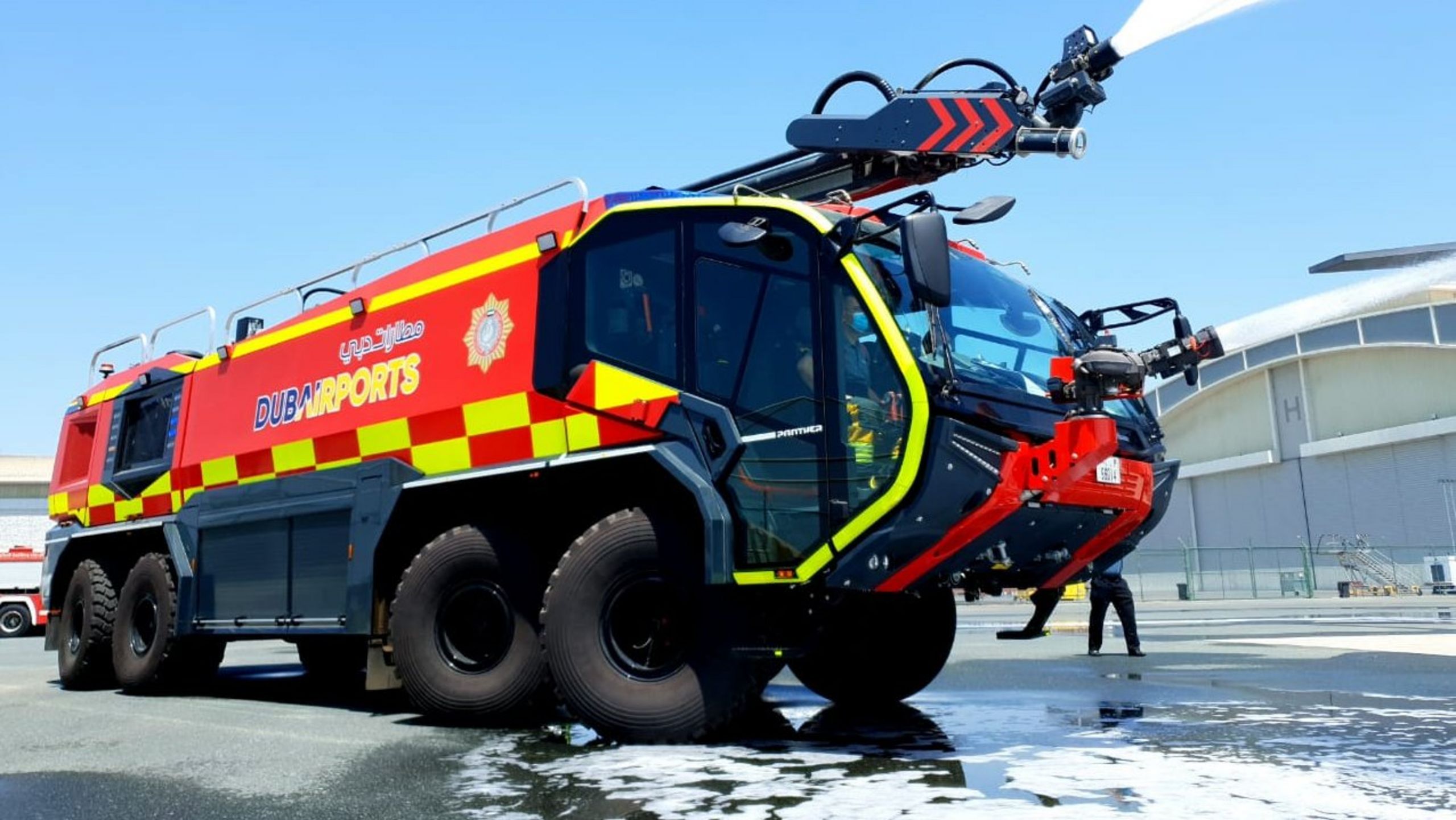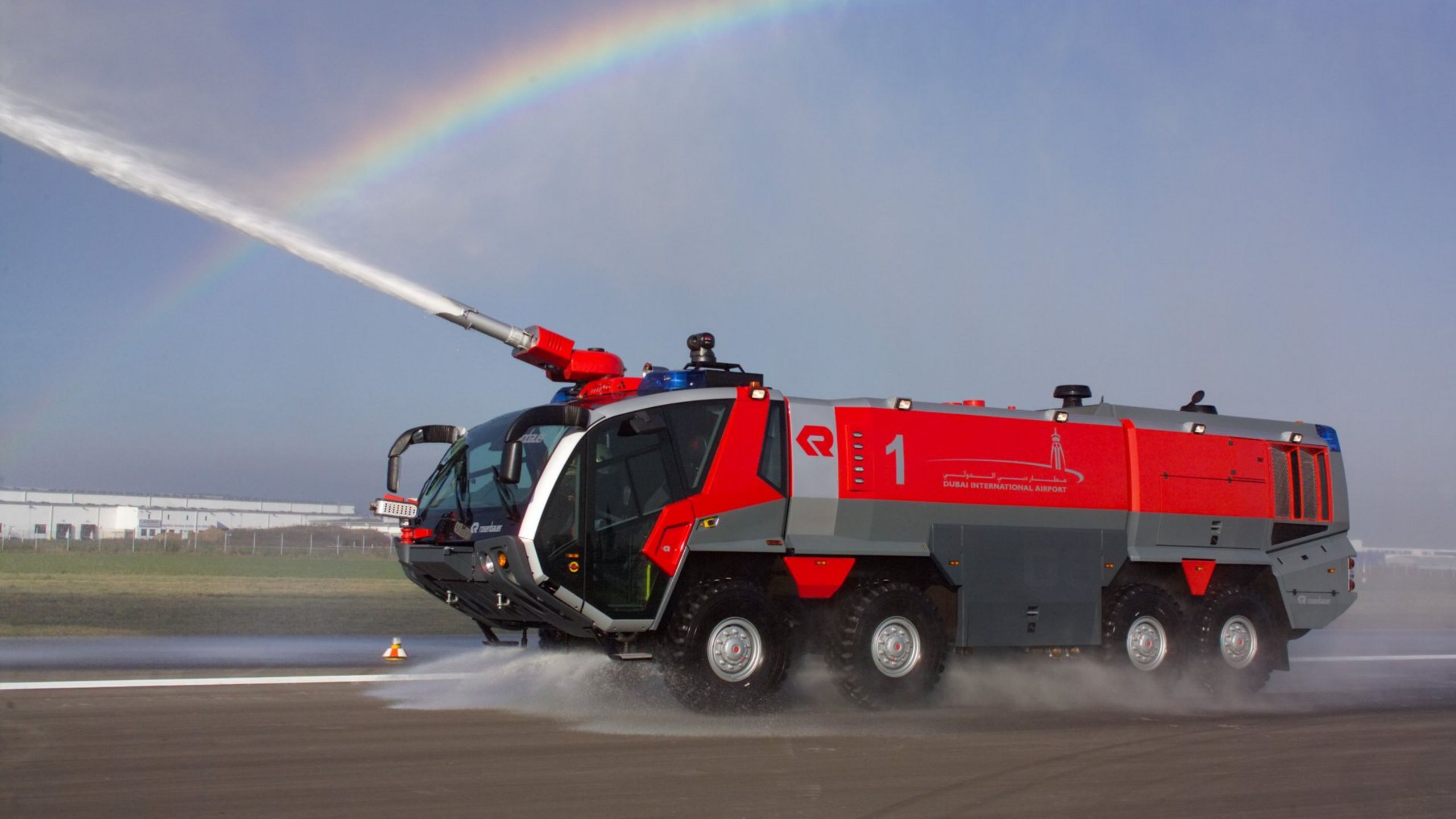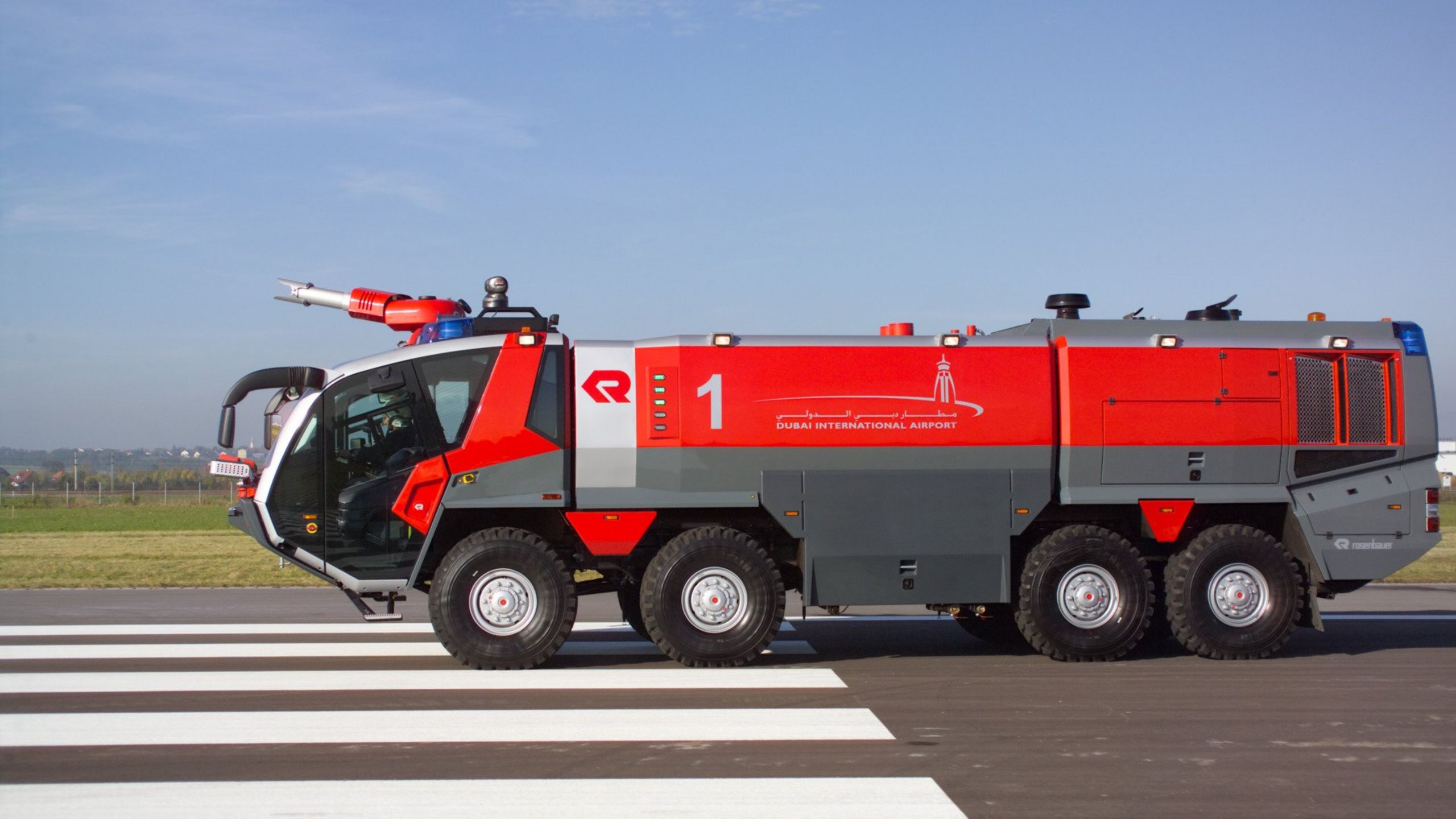Early Adopter.
Dubai Airports consistently relies on the latest technologies, also and especially for aircraft rescue and fire fighting (ARFF) vehicles.
When it comes to adopting the latest technological achievements, Dubai is one of the absolute pioneers. The vibrant city in the Arabian Gulf is always open to new ideas and is not afraid to procure the very first variants of new products and use them for everyday operations. This also applies at Dubai Airports.
First category 10 airport
In 2003, Dubai International (DXB) was one of the first, if not the very first, airport in the world to receive a Category 10 ranking in terms of its rescue and firefighting facilities. At the time, this was created by the International Civil Aviation Organization (ICAO) specifically for the Airbus A380 and contained precise specifications for the extinguishing performance with which an airport fire department must respond to an accident involving one of these wide-bodied aircraft. The most important piece of equipment for this then, and now is ARFF vehicles.
Even the ARFF fleet with which the coveted ICAO ranking was achieved consisted of Rosenbauer vehicles: four PANTHER 8x8s of the first generation plus a 4x4 of the second generation. When Rosenbauer presented the next generation at the world's leading trade fair Interschutz in 2005, Dubai Airports immediately secured the prototype and the first vehicles from the new series: all PANTHERS of the largest category (8x8), two of them equipped for the first time with a boom to be able to extinguish aircraft with upper decks (Airbus A380, Boeing B747) even from an elevated position.
Vehicles of superlatives
In 2009, Dubai Airports put Rosenbauer's most powerful ARFF vehicle to date into service: the PANTHER 8x8 with 1,400 hp (Volvo twin engine) and extended wheelbase, which can transport up to 19,000 l of extinguishing agent and boasts a firefighting equipment performance of up to 10,000 l/min. More of these giants were to follow.
In 2010, Dubai Airports opened the city's second airport, first for cargo flights, then three years later for passenger operations. Dubai World Central (DWC) had A380-capable infrastructure (runways, terminals, security facilities) from the outset. Of course, the Airport Fire Service Team at DWC also relies on the PANTHER.
Only the best of the best
In total, Dubai Airports currently operate 20 PANTHERS at both airports and has already launched a programme to replace the vehicles that have reached the end of their service life. These vehicles are PANTHER 8x8s with completely newly developed firefighting equipment (Generation 4) and the highest-quality special equipment. For example, they have a steerable rear axle to enable maneuvering and parking in confined spaces.
The firefighting equipment of the new PANTHER consists of an N110 centrifugal pump, an electronically controlled around-the-pump foam proportioning system, which automatically balances the foam compound quantity delivered with the water supply of the pump and the set proportioning rate, and also the newly developed RM80C turret on the roof (up to 9,000 l/min with up to 15 kg of powder per second, applied directly via the hollow jet) and the RM35C (up to 4,750 l/min and 10 kg of powder/second). The latter is mounted on a lowerable bumper turret on some of the vehicles, so that turbine fires can also be fought from below. Further vehicles are equipped with the STINGER boom.
Dubai Airports AFS team is one of the largest and best-equipped of its kind, equipped exclusively with state-of-the-art vehicles and equipment.
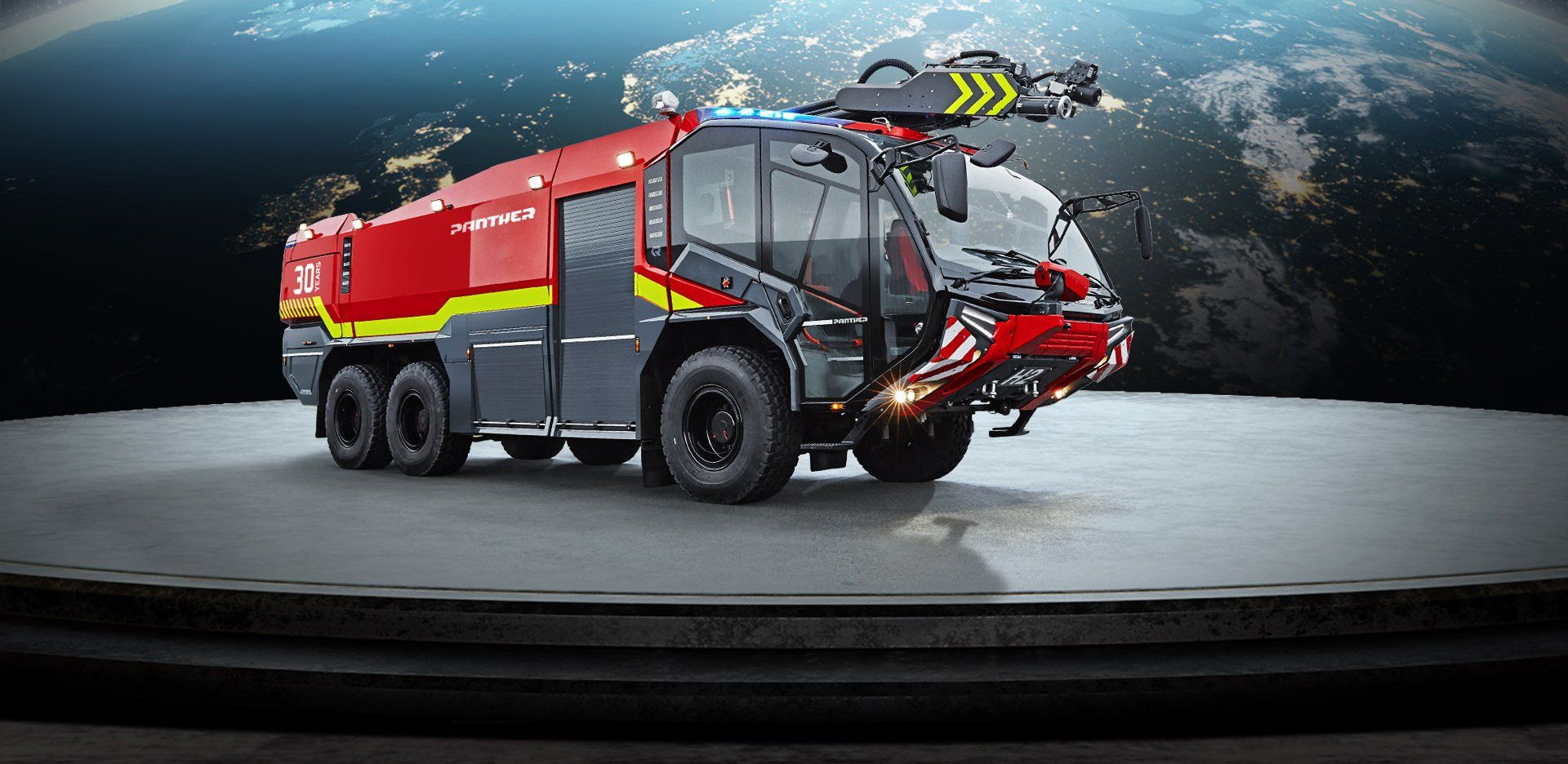
Register now for the Rosenbauer Newsletter & always be well informed!
Contact
Rosenbauer International AG
Paschinger Str. 90
4060 Leonding, Austria
office@rosenbauer.com
